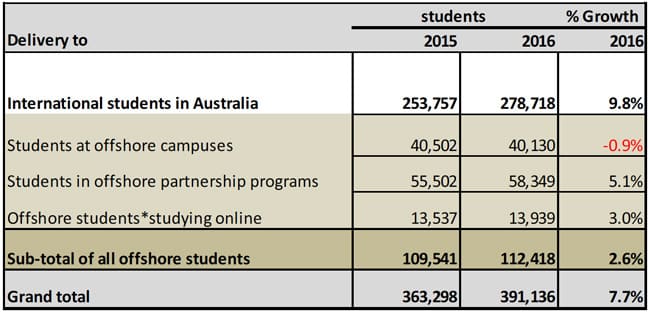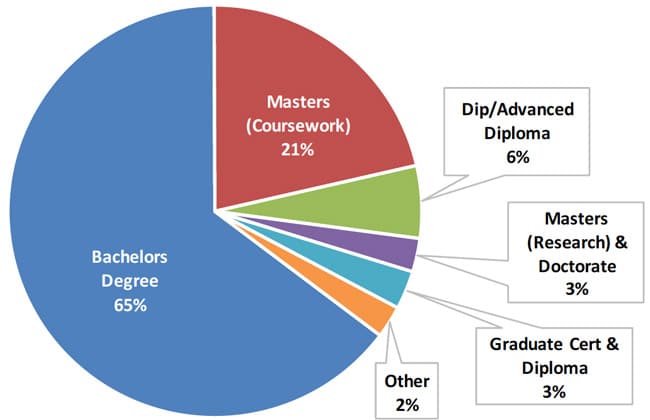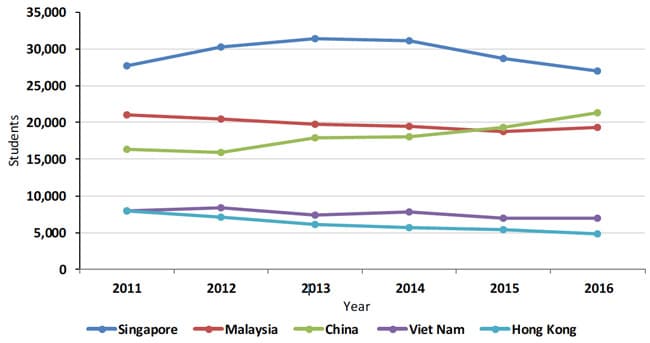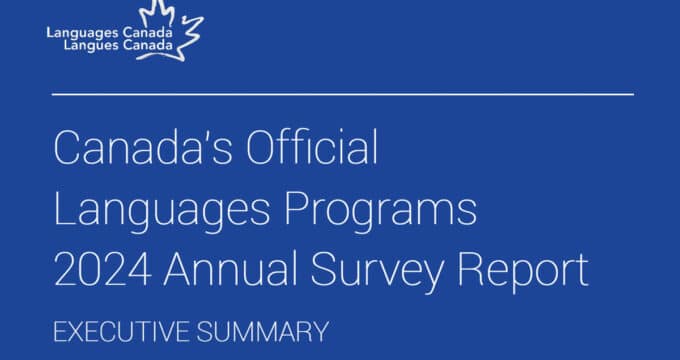Australia: Offshore delivery growing but more slowly than in-country enrolments
New data from the Department of Education and Training (DET) provides an interesting snapshot of the offshore delivery of Australian higher education. The DET report sets out some 2015 and 2016 benchmarks for foreign student participation in what is most often called transnational education (TNE) – that is, enrolment in Australian higher education programmes delivered outside of Australia. But it does so in part by relating those student numbers to onshore enrolment (i.e., foreign student numbers within Australia) to provide a more comprehensive view of foreign student participation in Australian higher education.
“Many students from around the world study Australian higher education courses without coming to Australia,” notes DET. “For an example, an Australian university may have campuses in one or more countries outside Australia, or deliver courses in partnership with foreign institutions, or offer courses online.”
Taking these different modes of onshore and offshore delivery into account, DET calculates that there were just under 400,000 foreign students (391,136) enrolled in Australian higher education in 2016. Nearly a third of that total, or just about 112,500 students, were enrolled offshore with the balance studying on campus in Australia.
Overall, the volume of offshore enrolments grew by nearly 3% between 2015 and 2016. This compares to just under 10% growth in onshore student numbers in Australian higher education over the same period, and the nearly 11% growth in total international enrolment within Australia for 2016.
The DET numbers also provide an important reference point for some of the very ambitious goals set out in Australia’s National Strategy for International Education 2025. The national strategy was released in 2016 and it imagines very dramatic growth in Australian TNE through 2025, and across all modes of delivery.
One of the pillars of the Australian strategy is an allied national plan called the Australian International Education 2025 (AIE2025) market development roadmap. It imagines a high-level target whereby Australia might earn a 10% share of what the AIE2025 analysts calculated to be a one-billion-student market for TNE learning.
The new DET numbers, meanwhile, put some detail to the 2016 baseline for enrolment in Australian TNE. The department tracks student numbers across three modes of delivery: those studying at Australian branch campuses abroad, those enrolled in programmes delivered in partnership between Australian and foreign institutions, and those following Australian higher education programmes online. The 2015 and 2016 numbers for each delivery mode are summarised in the following table.

More about the students
DET highlights as well that nearly two-thirds (65%) of offshore students are enrolled in bachelor degree programmes, with another 21% following masters-level courses.




















